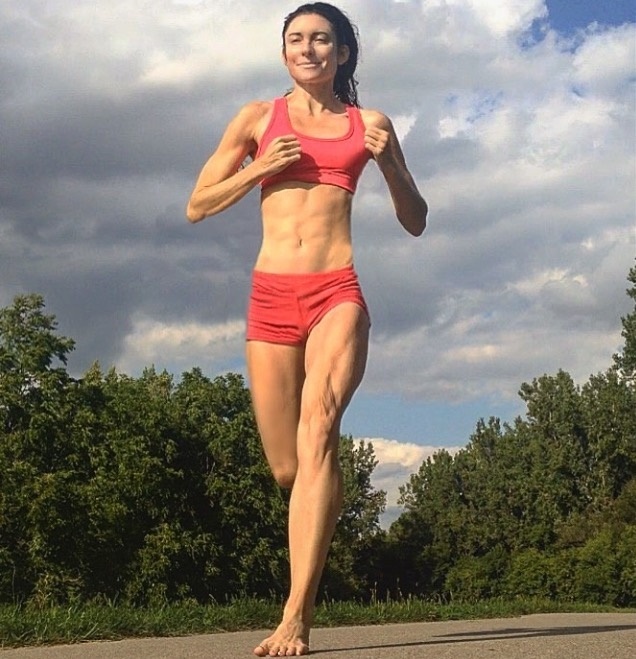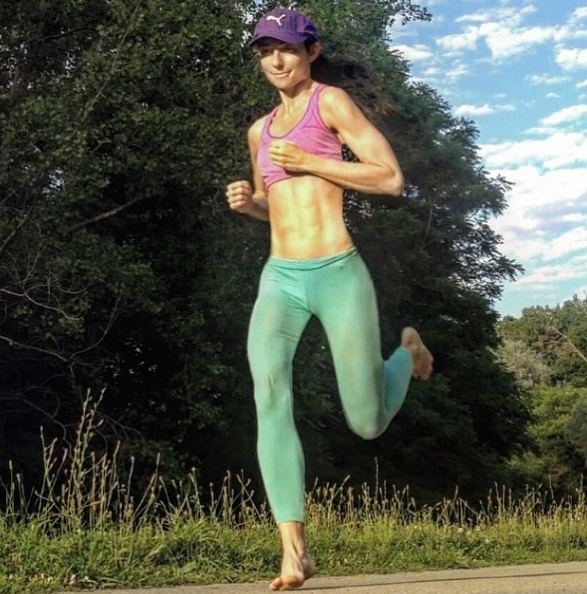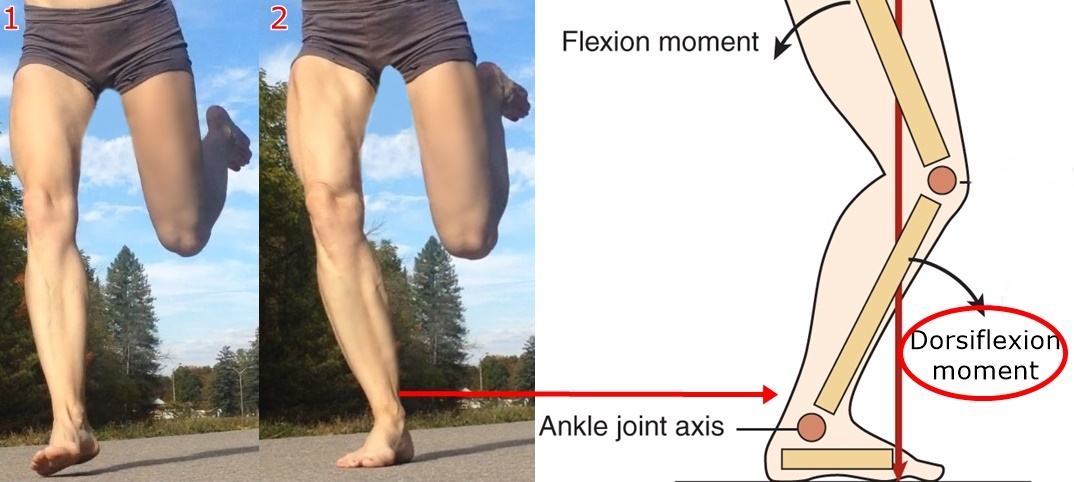First things first, forefoot running is not toe running. Some people often confuse toe running with forefoot running! Landing forefoot-first when running does not involve landing high up on the toes without the heel dropping down to the ground (this is toe running and its dangerous!)
Landing with a forefoot strike is actually a much flatter foot placement, almost like a mid-foot strike, but the balls of the foot, not the toes, is the first part of the foot to strike the ground, then the heel lowers down to the ground.

Forefoot running has significantly more benefits than any other foot strike pattern. These benefits include reduced impact, reduced over-pronation and optimal use of the elastic structures of the lower leg. Another benefit of forefoot running is that it improves the functional strength of the toes!
Weak toes makes them more vulnerable to injury, and balance and footstep stability is compromised, too, which can make bad mechanics even worse!
There are many ways a runner can develop stronger toes, such as walking barefoot on uneven surfaces and being barefoot more often in general, but one sure way is by running with a forefoot strike.
A 2014 study in the Journal of Sport and Health Science found that a forefoot strike landing when running naturally increased muscle activation (which is a major prerequisite for developing stronger muscles) in the long and short toes when the upper body (center of mass) is positioned over the forefoot during the early stages of stance (when the heel is still lifted off the ground).
The purpose of the increased muscle activation in the toes helps reduce damaging dorsiflexion moments (shown below) around the MTP joint (the big-toe joint) (Goldman et al. 2013).

- The touchdown and stance phases in forefoot running naturally increases MTP joint dorsiflexion moments (shown above) which demands greater muscle stabilization from the toes as compared (Perl et al.2012).
- In simple terms, the touchdown and stance phases of forefoot running requires ongoing active muscular activation and functional engagement of the toes which is also necessary for promoting more growth in soft tissue and muscle strength throughout the forefoot and toes.
Even more encouraging, forefoot running barefoot or in minimalist shoes, offers more opportunity for the toes to strengthen because the toes have more freedom to engage with more toe splay, extension, bending and flexion. These functional movements of the toes also helps expand the forefoot loading area which helps reshape the foot into a healthier, wider shape. 

The functional benefit of a wider forefoot is it allows for a wider contact area of the foot with ground. This not only provides a more secure base for balance, it also prevents loading from reaching beyond tolerance to one small area of the forefoot, rather loading is more evenly dispersed over a larger surface area. This is how impact overexposure on the foot is easily avoided because impact pressure spread best when the toes and forefoot can expand while landing with a forefoot strike during running.
You can check out many examples of barefoot-inspired minimalist running shoes (here!) that have a wide-toe box, enabling more functional engagements of the toes.
Below are also more examples of the evidence that supports the facts that not only can minimalist running shoes boost foot strength as well as the sensory functions in the feet, but they can significantly reduce impact loading across the legs and back:
Got a Bunion? Barefoot Running Shoes Impacts Bunion Growth, For the Better.
Minimalist Running Shoes Great for Treating Sore Knees.
Minimalist Running Shoes Improves Sensory Processing in the Feet, Especially in Older Runners.
Minimalist Shoes Linked to Less Lower Leg and Back Pain.

References:
Goldman et al. The potential of toe flexor muscles to enhance performance. J Sports Sci, 2013;31:424-33.
Miller et al. The effect of minimal shoes on arch structure and intrinsic foot muscle strength. J Sport Health Sci, 2014, 3, 74-85.
Perl et al. Effects of footwear and strike type on running economy. Med Sci Sports Exerc, 2012;44:1335-43.
If you’d like, you can support Run Forefoot and help keep it going by making a donation in any amount of your choosing:

Or, you can also support Run Forefoot by shopping at the following top minimalist shoes brands, and be sure to bookmark the links:
Be Lenka: https://www.dpbolvw.net/click-7600968-14330828
FeelGrounds: https://www.feelgrounds.com/?p=RunForefoot
Xero Shoes: https://xeroshoes.com/go/Run_Forefoot
Iguaneye: https://www.iguaneye.com/?ref=8tfXVc92
Soft Star Shoes: https://shrsl.com/3mp1b
Wilding Shoes: https://bit.ly/3lIygQP
Earth Runners: https://earthrunners.com/?rfsn=6763579.f7f9c9
Vivobarefoot: https://shrsl.com/3kvih
Zappos: https://goo.gl/J1CeAd

Bretta Riches
BSc Neurobiology; MSc Biomechanics candidate, ultra minimalist runner & founder of RunForefoot. I was a heel striker, always injured. I was inspired by the great Tirunesh Dibaba to try forefoot running. Now, I'm injury free. This is why I launched Run Forefoot, to advocate the health & performance benefits of forefoot running and to raise awareness on the dangers of heel striking, because the world needs to know.
Latest posts by Bretta Riches (see all)
- Can You Run In Barefoot Shoes? Yes, But DON’T Heel Strike! - 21/07/2024
- Why Cushioned Running Shoes Are Really Bad for Your Feet - 19/07/2024
- Do Cushioned Running Shoes Cause Injuries? - 17/07/2024


